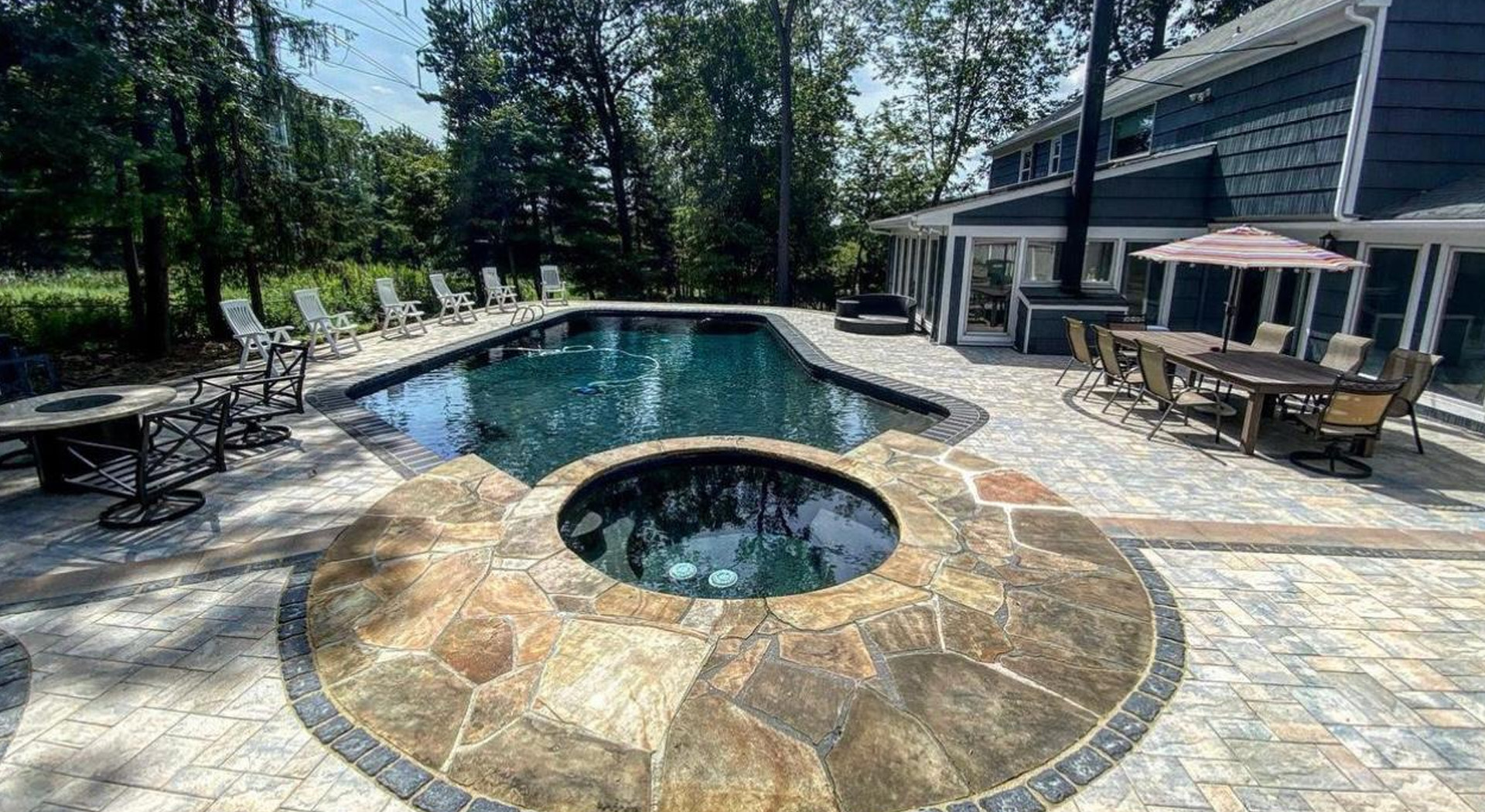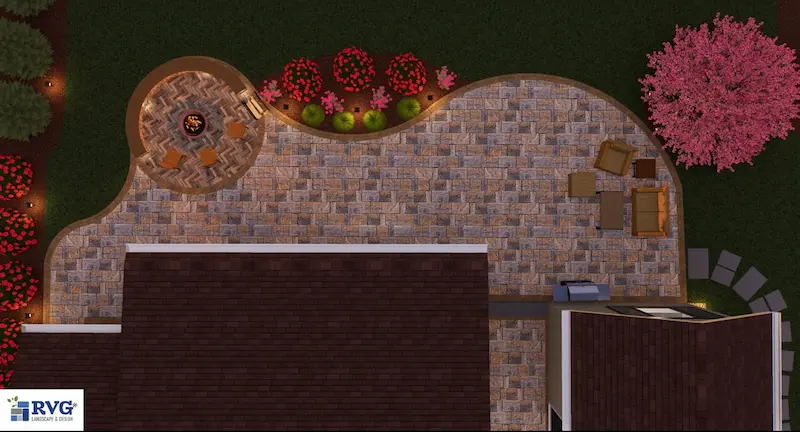A patio is more than just an extension of your home; it’s a vital part of your outdoor living space that can enhance the aesthetic appeal, functionality, and value of your property. Whether you love entertaining guests, enjoying quiet evenings with family, or simply basking in the sun, the right patio can transform your outdoor experience. In this guide we’ll explore the factors to consider when choosing patio materials, providing you with the insights needed to make an informed decision.
Factors to Consider When Choosing Patio Materials
Selecting the perfect materials for your patio involves more than just aesthetics. Here are some key factors to keep in mind:
Climate
Your local climate will significantly impact the performance and durability of your patio materials. For example, materials that work well in dry and hot climates, such as certain types of stone or concrete, may not be suitable for regions with heavy rainfall or freezing temperatures, where water absorption and expansion can cause cracking. Additionally, areas with high humidity might require materials that resist mold and mildew. It is important to choose materials that can withstand the specific weather conditions of your region to ensure your patio remains in good condition over time.
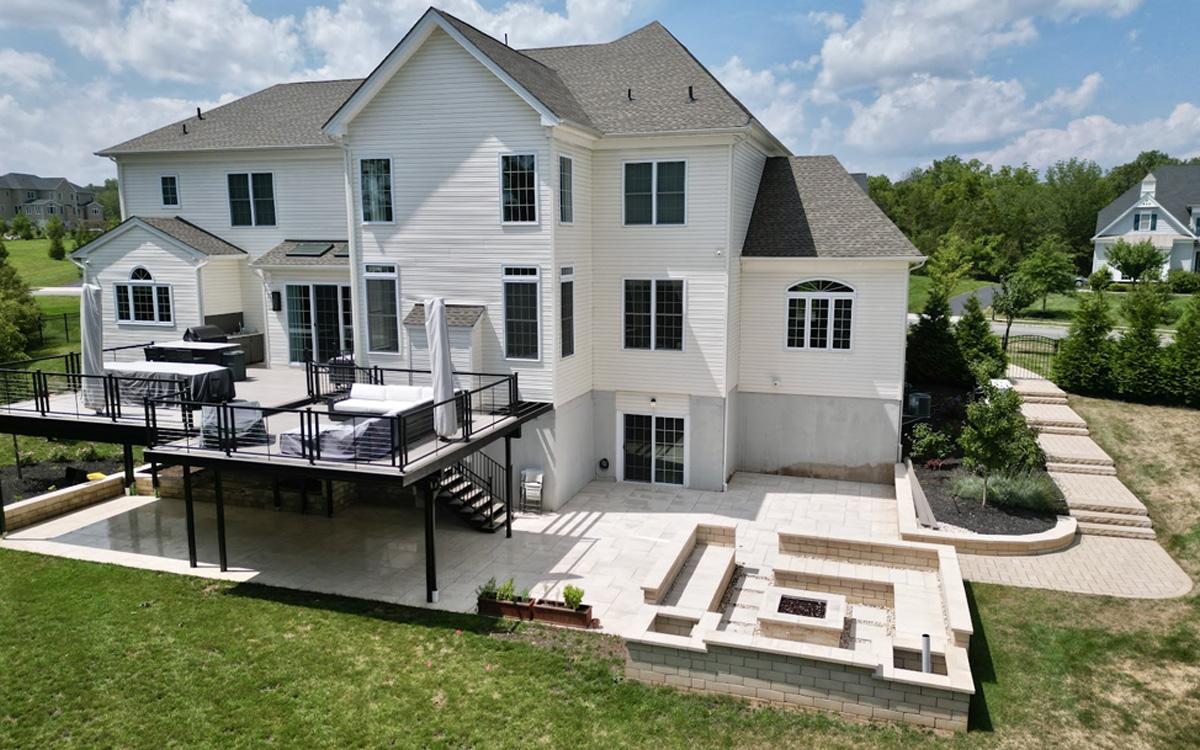
Durability
Investing in durable materials can save you time and money in the long run. Consider how well each material withstands wear and tear, exposure to the elements and potential damage. For instance, when choosing materials for outdoor projects it’s crucial to select those that can endure harsh weather conditions, such as rain, snow and UV rays. Durable materials reduce the need for frequent replacements and repairs, ultimately contributing to lower maintenance costs and increased efficiency. Carefully evaluating the longevity and resilience of materials before making a purchase is a wise investment that pays off over time.
Maintenance
Different materials require varying levels of maintenance. Natural stone surfaces may need regular sealing to prevent stains and maintain their appearance, while wooden materials might require frequent polishing to keep them looking their best. Some synthetic options are virtually maintenance-free, requiring only occasional cleaning to stay in top condition. When choosing materials you should think about how much time and effort you’re willing to invest in upkeep to ensure they remain durable and aesthetically pleasing over time.
Style
Your patio should complement the overall design of your home and landscape. Select materials and colors that blend seamlessly with your existing aesthetic to create a harmonious and inviting outdoor space. Consider incorporating elements such as comfortable seating, thoughtful outdoor lighting, and lush greenery to enhance the ambiance and functionality. You might also want to introduce water features like a small fountain or a pond to add a soothing effect. Additionally, incorporating a fire pit or an outdoor fireplace can not only provide warmth during cooler evenings but also serve as a focal point for gathering. By paying attention to these details you can transform your patio into a perfect extension of your indoor living area, ideal for relaxation and entertainment. With the right additions your patio can become a multi-season retreat, allowing you to enjoy the outdoors all year round.
Environmental Impact
When selecting patio materials, considering the environmental impact is essential for creating a sustainable outdoor space. Natural materials such as reclaimed wood, locally sourced stone and recycled concrete have a lower ecological footprint compared to synthetic options, as they require fewer resources and generate less waste. Reclaimed wood for example repurposes existing materials, reducing the demand for new lumber and the associated deforestation. Similarly, locally sourced stone minimizes transportation emissions, contributing to a reduction in carbon footprint.
Another important factor is the production process of the materials. Some patio materials, like certain types of concrete and brick, involve energy-intensive manufacturing processes that contribute to higher greenhouse gas emissions. Natural stones and reconstituted materials often have less energy-intensive processes, making them more environmentally friendly choices.
You might want to consider the lifecycle of the materials. Materials that are long-lasting and durable not only reduce the need for replacements but also minimize waste and resource consumption in the long run. Choosing materials that can be recycled or repurposed at the end of their lifecycle further enhances the sustainability of your patio. For instance, pavers or tiles that can be easily removed and reused offer a sustainable option compared to those that must be entirely replaced.
By opting for sustainable and environmentally friendly materials, you can contribute to the preservation of natural resources and help reduce pollution, creating a patio that is not only beautiful and functional but also kind to the planet.
Overview of Popular Patio Material Options
Concrete
Pros: Concrete is a versatile and cost-effective option. It can be poured into any shape and customized with various finishes, colors and patterns. It’s highly durable and can withstand harsh weather conditions.
Cons: Without proper maintenance, concrete can crack over time. It can also become slippery when wet, posing a safety hazard.
Real-Life Example: A modern home with a sleek, polished concrete patio featuring custom inlays and a smooth finish, perfect for a minimalist aesthetic.
Natural Stone
Pros: Natural stone, such as flagstone, slate or travertine offers a timeless and luxurious appearance. Each stone is unique, adding character and elegance to your patio. The natural variations in color, texture and pattern ensure that no two stones are alike and providing a truly custom look.
Cons: Natural stone can be expensive and may require professional installation. It also needs periodic sealing to maintain its beauty and durability.
Real-Life Example: A rustic cottage with a charming flagstone patio, surrounded by lush greenery, creating a picturesque outdoor retreat.
Pavers
Pros: Pavers come in various shapes, sizes and colors, allowing for creative and customized designs that can enhance the aesthetic appeal of any outdoor space. They are relatively easy to install and can be replaced individually if damaged, making maintenance straightforward and cost-effective. Pavers are also known for providing excellent drainage, helping to prevent water accumulation and reducing the risk of flooding. Their durability and versatility make them a popular choice for pathways, patios, driveways and other hardscaping projects.
Cons: High-quality pavers can be very pricey, and the installation process can be labor-intensive. Weeds can also grow between the joints if not properly maintained.
Real-Life Example: A suburban home with a vibrant paver patio featuring intricate patterns, adding visual interest and functionality.
Wood
Pros: Wood patios offer a natural, warm and inviting look that enhances the overall aesthetic of your outdoor space. They can be stained or painted to match your design preferences and allowing for a high degree of customization. Wood patios are also relatively easy to install, which can save on labor costs and time.
Cons: Wood requires regular maintenance, such as staining and sealing, to prevent rot, insect damage, and weathering. It may also be prone to splintering.
Real-Life Example: A coastal-themed home with a wooden deck patio, perfect for casual gatherings and seaside relaxation.
Budgeting for Your Patio Project
Creating a budget for your patio project is crucial to ensure you get the best value without overspending. Here’s a cost breakdown and some tips for saving:
- Material Costs: Research the price per square foot for each material. Don’t forget to factor in additional costs such as delivery and installation.
- Labor Costs: If you’re hiring professionals, obtain multiple quotes to find the best rates. Include costs for site preparation, installation and any necessary permits.
- Maintenance Costs: Consider long-term maintenance expenses. Some materials may be cheaper upfront but require costly upkeep over time.
Cost-Saving Tips:
- Opt for locally sourced materials to reduce shipping costs.
- Take advantage of seasonal sales and promotions.
- Consider a phased approach, building your patio in stages to spread out costs.
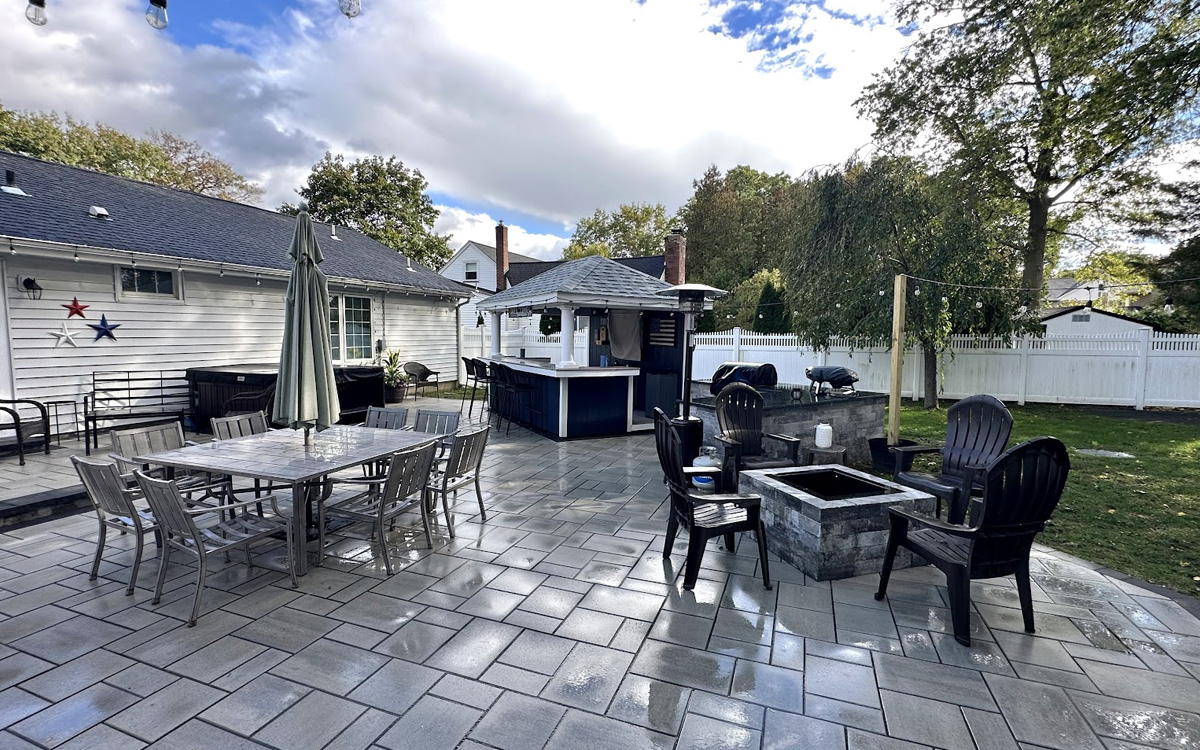 Planning and Designing Your Patio
Planning and Designing Your Patio
Planning and designing your patio involves several considerations to ensure it meets your needs and preferences:
Size
Determine the size based on how you intend to use the space. A larger patio is ideal for hosting large gatherings, while a smaller, cozier setup might be perfect for intimate family moments.
Shape
The shape should complement your home’s architecture and landscape. Common shapes include rectangular, square, circular, and freeform designs.
Layout
Plan the layout to accommodate furniture, pathways, and functional areas like cooking stations or fire pits. Ensure there’s enough space to move around comfortably.
Orientation
Consider the orientation of your patio to maximize sunlight during certain times of the day and provide shade when needed.
Tips for Successful DIY Patio Projects
For those who love a hands-on approach, here are some tips for a successful DIY patio project:
- Research Thoroughly: Understand the installation process for your chosen material. Watch tutorials, read guides, and seek advice from experts.
- Prepare the Site: Proper preparation is key. Ensure the ground is level and adequately compacted to avoid future issues like sinking or uneven surfaces.
- Use Quality Tools: Invest in or rent high-quality tools to make the installation process smoother and more efficient.
- Take Your Time: Rushing can lead to mistakes. Allocate sufficient time for each phase of the project, from planning and preparation to execution and finishing touches.
When to Hire Professional Help
While DIY projects can be rewarding, certain situations may warrant professional assistance:
- Complex designs or large-scale projects that require precise measurements and advanced techniques
- Specialized materials requiring expert installation, such as custom stonework, intricate tile patterns, or unique wood finishes
- Limited time or physical capability to complete the project, especially if you have a busy schedule or physical limitations
- Lack of experience or confidence in completing the project yourself, as improper installation can result in costly repairs and potential safety hazards.
Hiring professionals ensures your patio is installed correctly and efficiently. Professionals bring years of experience and expertise, which can help avoid common mistakes and ensure the longevity of your investment. Like we do, contractors often have access to high-quality materials and tools that may be out of reach for the average DIYer. This not only provides peace of mind but also results in a beautiful, long-lasting outdoor space that you can enjoy for years to come.
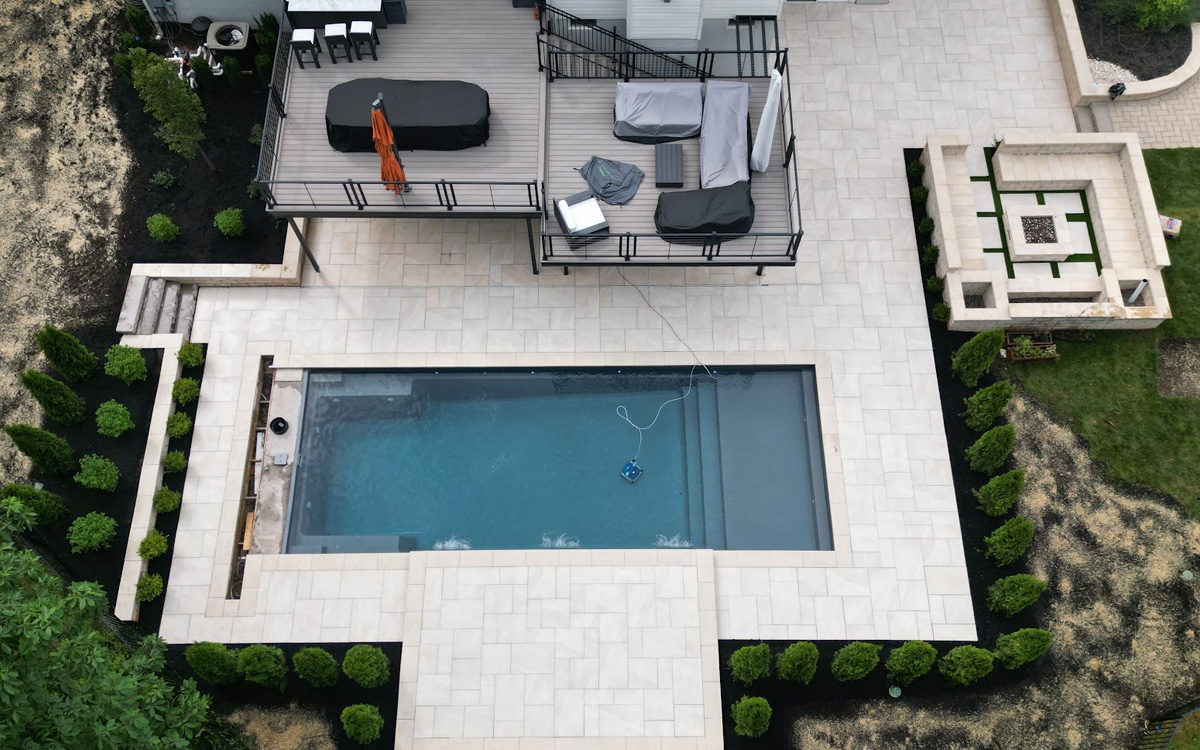
Conclusion
Choosing the right materials for your patio is essential for creating a durable, beautiful and functional outdoor space. By considering factors such as climate, durability, maintenance, and style, you can make an informed decision that enhances your home and lifestyle. Whether you opt for concrete, natural stone, pavers, or wood, each material offers unique benefits and challenges. Planning your budget, designing thoughtfully, and deciding whether to embark on a DIY project or hire professionals will set you on the path to patio perfection.
Ready to transform your outdoor living space? When you’re ready to bring your vision to life, our services are here to turn your dream outdoor space into reality.

